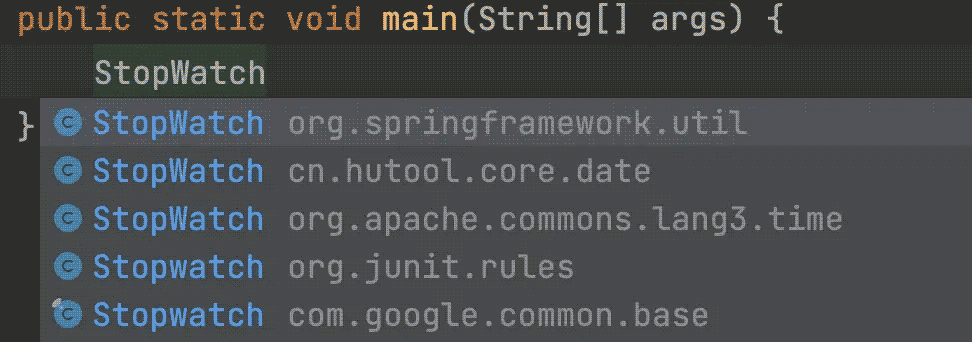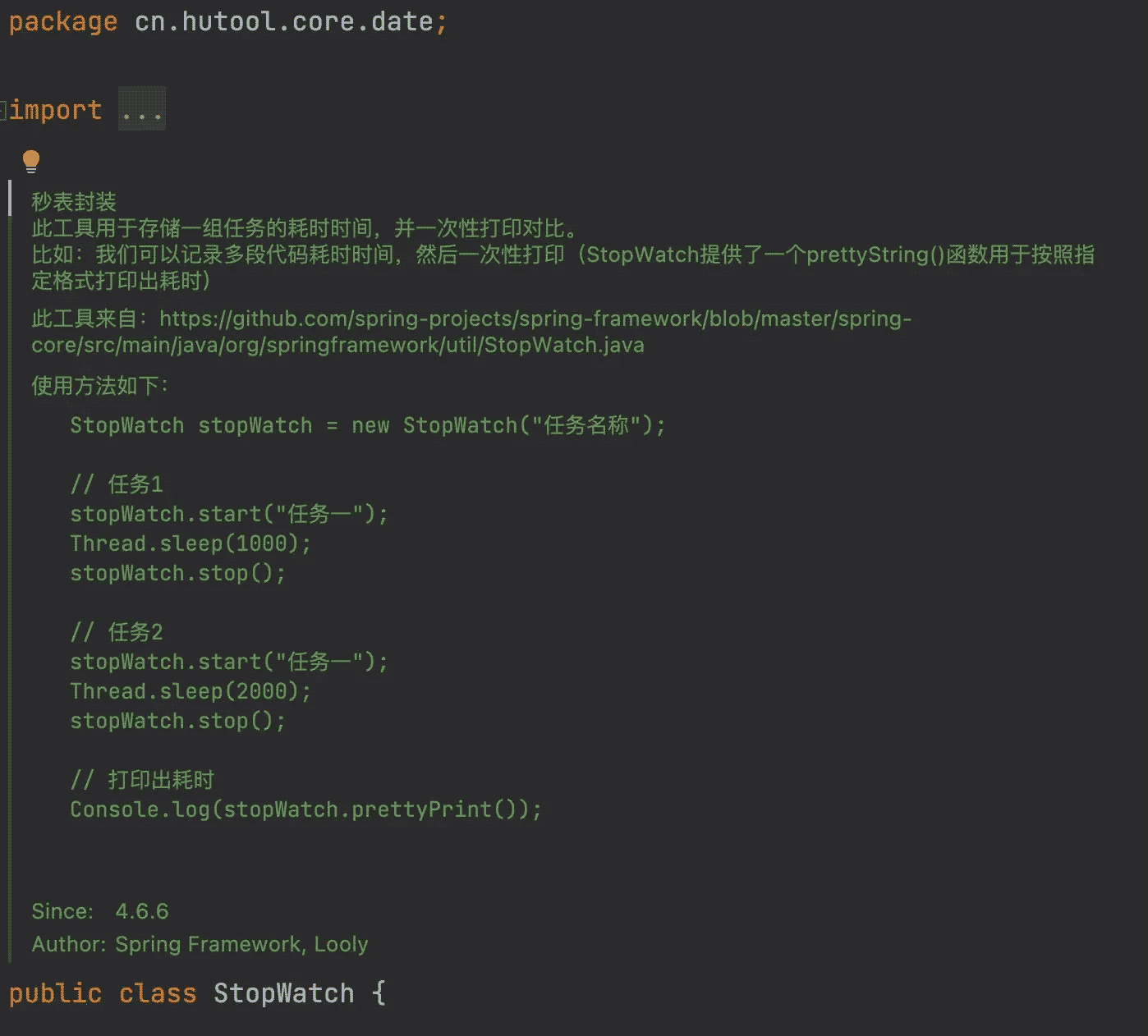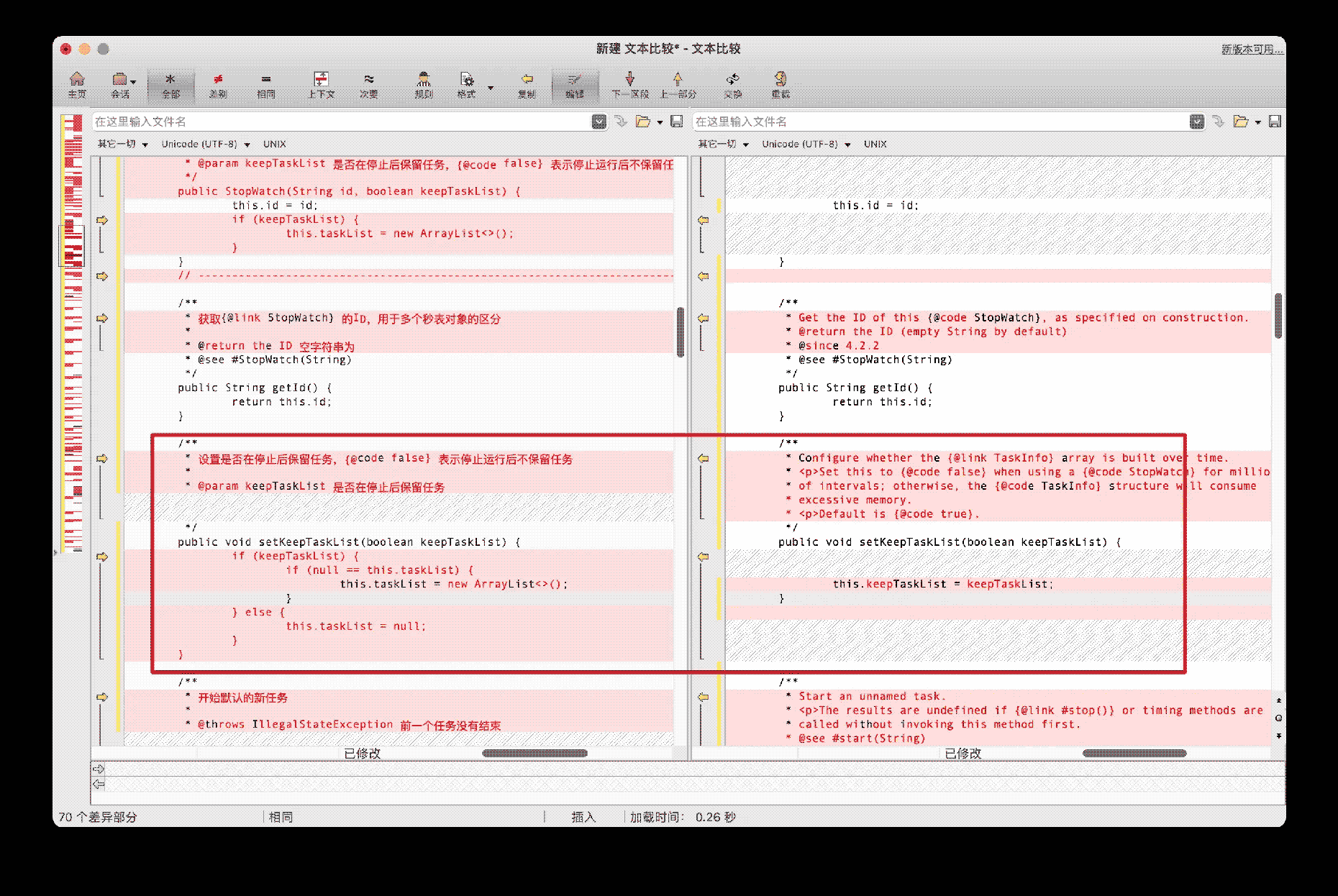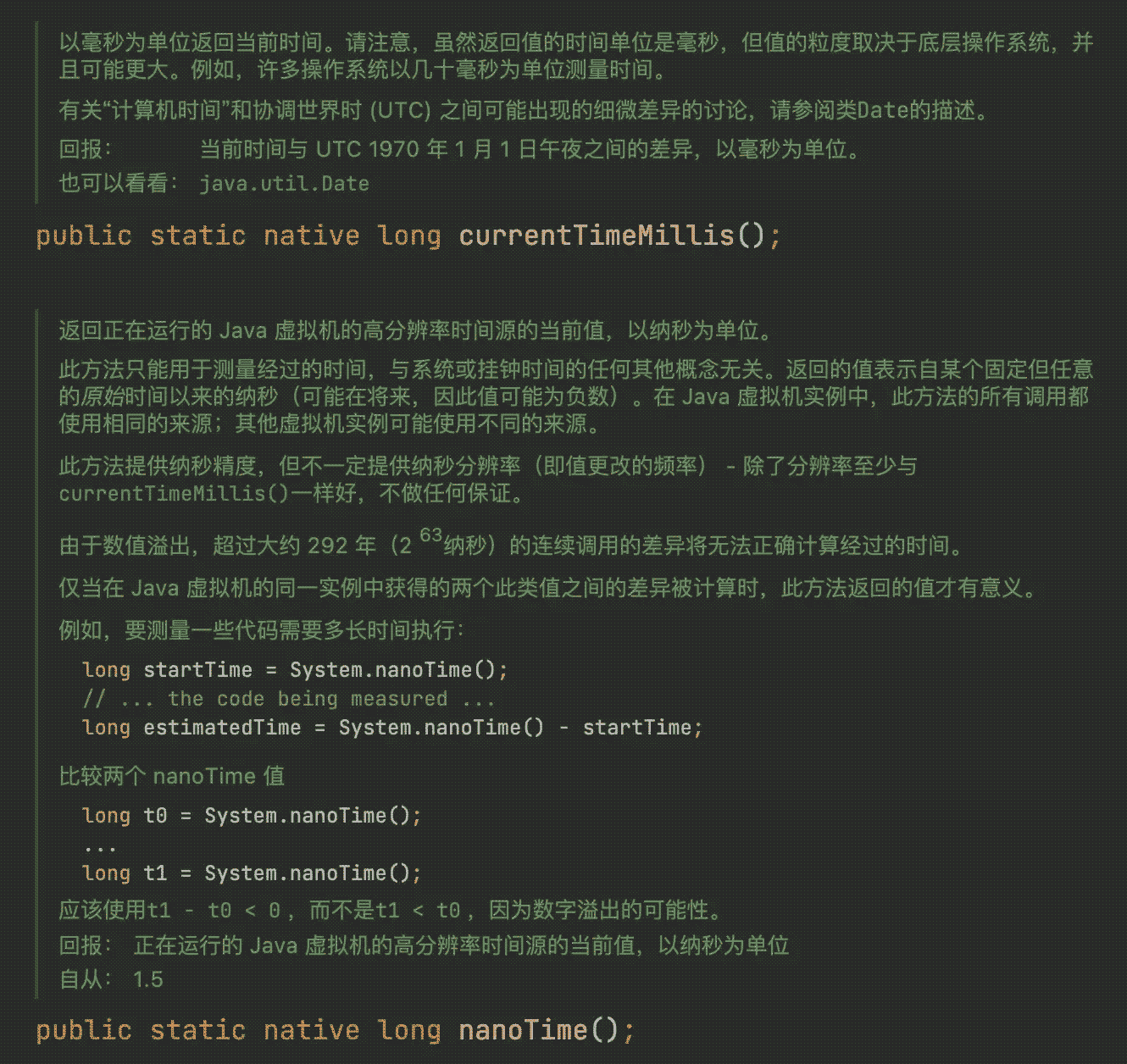Spring Boot源码如何实现StopWatch优雅统计耗时
导读:本文共3497.5字符,通常情况下阅读需要12分钟。同时您也可以点击右侧朗读,来听本文内容。按键盘←(左) →(右) 方向键可以翻页。
摘要: 引言昨天,一位球友问我能不能给他解释一下 @SpringBootApplication 注解是什么意思,还有 Spring Boot 的运行原理,于是我就带着他扒拉了一下这个注解的源码,还有 SpringApplication 类的 run() 方法的源码,一下子他就明白了。你别说,看源码的过程还真的是挺有趣,这不,我就发现了一个有意思的点。publicConf... ...
目录
(为您整理了一些要点),点击可以直达。引言
昨天,一位球友问我能不能给他解释一下 @SpringBootApplication 注解是什么意思,还有 Spring Boot 的运行原理,于是我就带着他扒拉了一下这个注解的源码,还有 SpringApplication 类的 run() 方法的源码,一下子他就明白了。
你别说,看源码的过程还真的是挺有趣,这不,我就发现了一个有意思的点。
publicConfigurableApplicationContextrun(String...args){ StopWatchstopWatch=newStopWatch(); stopWatch.start(); ...... stopWatch.stop();}Spring Boot 是用 StopWatch 来统计耗时的,而通常情况下,我们会用 System.currentTimeMillis() 来统计耗时,对吧?编程喵????开源项目里就有这样一段代码,在处理统一日志处理切面的时候。
@Around("webLog()")publicObjectdoAround(ProceedingJoinPointjoinPoint)throwsThrowable{longstartTime=System.currentTimeMillis();longendTime=System.currentTimeMillis();webLog.setSpendTime((int)(endTime-startTime));}对比之下,我们就能发现,JDK 提供的 System.currentTimeMillis() 没有 Spring 提供的 StopWatch 简洁、清晰。
StopWatch使用
尤其是在多任务的情况下,StopWatch 简直好用到爆????!
//创建一个StopWatch实例StopWatchsw=newStopWatch("沉默王二是傻X");//开始计时sw.start("任务1");Thread.sleep(1000);//停止计时sw.stop();System.out.printf("任务1耗时:%d%s.\n",sw.getLastTaskTimeMillis(),"ms");sw.start("任务2");Thread.sleep(1100);sw.stop();System.out.printf("任务2耗时:%d%s.\n",sw.getLastTaskTimeMillis(),"ms");System.out.printf("任务数量:%s,总耗时:%ss.\n",sw.getTaskCount(),sw.getTotalTimeSeconds());看到没,是不是很简单?
先 new 一个 StopWatch 对象
再 start 开始计时
然后 stop 停止计时
最后通过 sw.getLastTaskTimeMillis() 得出时间差
如果换成 System.currentTimeMillis() 就要了老命,先得声明好几个 long 型的局部变量,然后要第二个减第一个,第三个减第二个,稍微粗心一点(尤其是 CV 大法)时,很容易搞错。
除了可以通过局部时间,还可以通过 sw.getTotalTimeSeconds() 获取总的耗时。
任务1耗时:1002ms.
任务2耗时:1105ms.
任务数量:2,总耗时:2.107820109s.
另外,StopWatch 还提供了一个 sw.prettyPrint() 方法供打印出漂亮的格式化结果:
StopWatch '沉默王二是傻 X': running time = 2108529351 ns
---------------------------------------------
ns % Task name
---------------------------------------------
1004338467 048% 任务1
1104190884 052% 任务2
有耗时,有占用百分比,还有任务名,非常清晰。
除了 Spring,hutool 工具库和 Apache common 工具包都提供了各自的 StopWatch。

查看 hutool 工具库中的 StopWatch 源码可以得出,该类其实就来自 Spring 的 StopWatch.java,用法也完全一致。

这说明 hutool 的作者也认为 Spring 的 StopWatch 写得好,哈哈哈????。
使用Beyond compare比较
使用 Beyond compare 比较后也能得出,两者除了一个中文注释,一个英文注释,代码几乎一样。setKeepTaskList 方法有比较大的不同。

那也就是说,如果你的项目中没有使用 Spring 全家桶,只用了 hutool 工具包,那就可以使用 hutool 的 StopWatch 来代替 System.currentTimeMillis()。
通过分析 StopWatch 的 stop 方法源码:
publicvoidstop()throwsIllegalStateException{ if(null==this.currentTaskName){ thrownewIllegalStateException("Can'tstopStopWatch:it'snotrunning"); } finallonglastTime=System.nanoTime()-this.startTimeNanos; this.totalTimeNanos+=lastTime; this.lastTaskInfo=newTaskInfo(this.currentTaskName,lastTime); if(null!=this.taskList){ this.taskList.add(this.lastTaskInfo); } ++this.taskCount; this.currentTaskName=null;}其实可以发现,StopWatch 的内部是通过 System.nanoTime() 来计时的,本质上和 System.currentTimeMillis() 差别并不大。
nanoTime 比 currentTimeMillis 的粒度更细,前者是以纳秒为单位,后者是以毫秒为单位。

注意两者都是 native 方法,也就是说,值的粒度其实取决于底层的操作系统。
看到这,大家可能会恍然大悟,StopWatch 不过是披着一层外衣的 System.currentTimeMillis() 嘛?
但妙就妙在,这层外衣足够的漂亮,足够的优雅。StopWatch 可以记录每个子任务的名称,以及按格式化打印结果,尤其是针对多任务统计时更友好一点。
当然了,除了选择 Spring 和 hutool 的 StopWatch,Apache commons-lang3 的 StopWatch 也是一个不错的可选项,更加灵活多变。
StopWatchsw=StopWatch.createStarted();Thread.sleep(1000);System.out.printf("耗时:%dms.\n",sw.getTime());其他两个都是通过 new 来创建 StopWatch 对象,commons-lang3 还可以通过 createStarted(创建并立即启动)、create(创建)来完成。
还可以调用 suspend 方法暂停计时、resume 方法恢复计时、reset 重新计时。
//暂停计时sw.suspend();System.out.printf("暂停耗时:%dms.\n",sw.getTime());//恢复计时sw.resume();System.out.printf("恢复耗时:%dms.\n",sw.getTime());//停止计时sw.stop();System.out.printf("总耗时:%dms.\n",sw.getTime());//重置计时sw.reset();//开始计时sw.start();System.out.printf("重置耗时:%dms.\n",sw.getTime()); </div> <div class="zixun-tj-product adv-bottom"></div> </div> </div> <div class="prve-next-news">Spring Boot源码如何实现StopWatch优雅统计耗时的详细内容,希望对您有所帮助,信息来源于网络。